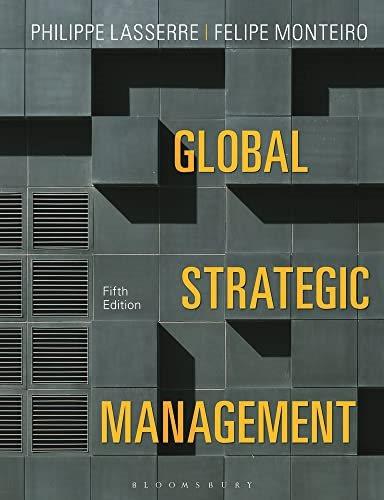In 2014, TAG Heuer, a Swiss luxury watchmaker and part of the LVMH group (Louis Vuitton Mot
Question:
In 2014, TAG Heuer, a Swiss luxury watchmaker and part of the LVMH group (Louis Vuitton Moët Hennessy) entered into the connected watch market driven by its CEO Jean-Claude Biver and the Head of Product Development, Guy Sémon. With no market research or help from external consultants they surged ahead in the new watch development. This was in response to the introduction of connected devices, in particular the Apple Watch. Based in La Chaux-de-Fonds, the cradle of Swiss watchmaking and a UNESCO World Heritage Site, TAG Heuer was located amid Alpine pastures at an altitude of 1,000 metres. With sales of approximately 600,000 watches and revenues of approximately €750 million in 2015, Biver was enthusiastic about entering a high-growth market that could bring new customers and rejuvenate the brand. However, embracing digital was potentially a paradigm change for TAG Heuer and for the Swiss watch industry more broadly.
Biver had helped save the Swiss watch industry when quartz watches largely replaced mechanical watches in the 1970s and 1980s. In 2004, he became CEO of Hublot, a niche brand which turned into a 100 million Swiss franc business within two years and was bought by LVMH in 2008. When he was made president of TAG Heuer in 2014, he immediately replaced the ‘old guard’ with a new era of management. He had a start-up mentality, recognizing the need for agility and speed. While the Swiss watch industry was divided as to how the market would react to the launch of the Apple iWatch, at TAG Heuer, Sémon, a R&D guru in the watch industry, recognized that TAG Heuer lacked the technology to fully develop the connected watch and would have to find external partners. He was also convinced it would be a transformational project for the company. Biver saw the onset of smartwatches as both an opportunity and a threat. They sought help from Silicon Valley and after a couple of visits partnered with Intel for the microprocessor and Google for the operating system. In March 2015 the partnership was announced at the Baselworld watch and jewellery show which attracted huge media attention and speculation.
Breaking into the luxury markets Technical giants like Apple had been trying to break into the luxury sector to understand more about the intangible value of brands such as TAG Heuer. Digital autocrats concentrated on technical features of an object whilst purveyors of luxury preferred the art and emotion of a product. Apple had tried to move into the high-value sector by creating the illusion of scarcity to increase demand. But, despite its best efforts, including attempts to ‘poach’
employees from high-end Swiss watchmakers and successfully luring TAG Heuer’s sales director onto its iWatch launch team, its products remained at a lower price point than its luxury competitors.
Silicon Valley and TAG Heuer Swiss watchmakers produced watches that were art.
They cultivated their image as organizations capable of producing quality at the highest level over generations.
Value came from superior workmanship, artistic technique and other intangibles inherent to luxury brands. When TAG Heuer approached Silicon Valley it brought with it an ability to capture these intangible qualities and charge more than $100,000 for a device that tells the time. From TAG Heuer, companies in the Valley could learn about brand positioning and gain an understanding of how consumers value luxury – a mutually beneficial partnership. When the partnership between Intel and Google, the Silicon Valley giants, and TAG Heuer was announced in March 2015, industry experts noted the mutual benefits of this union between the luxury and digital segments. The launch of the TAG Heuer Connected watch – the first ‘Luxury Android wear’ – later that year attracted massive media coverage. The product sold out in the United States within forty-eight hours, with a price tag of $1,500 per piece. Biver noted in a presentation in May 2017 that ‘These customers told us they were buying not just the technology but the exclusivity, status and prestige.’
Questions:
1 Does TAG Heuer have the capabilities to develop a connected watch? If yes, list these elements.
2 Should other Swiss brands compete in the connected watch market? List reasons why and why not.
3 What is the importance of the ‘Swiss Made’ label for the connected watch segment?
Step by Step Answer:

Global Strategic Management
ISBN: 9781350932968
5th Edition
Authors: Philippe Lasserre, Felipe Monteiro





